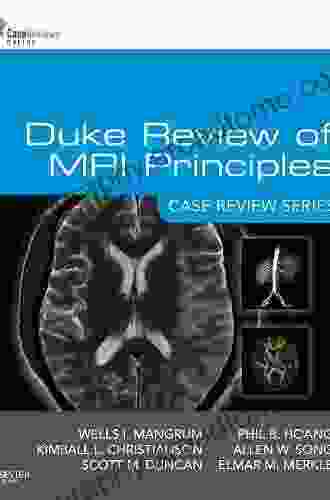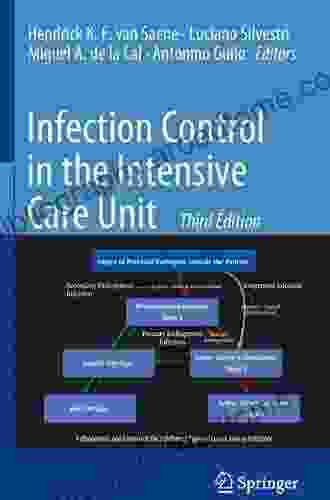Food Allergies, Nutrition, and Health: A Comprehensive Guide to Managing Food Intolerances

Food allergies are a serious public health concern, affecting millions of people worldwide. The prevalence of food allergies has been steadily increasing over the past decade, with certain populations and age groups being particularly vulnerable. Understanding the causes, symptoms, and management of food allergies is essential for maintaining good health and well-being. This comprehensive guide provides a detailed overview of food allergies, nutrition, and health, empowering individuals to take control of their health and live a fulfilling life despite food intolerances. 4.1 out of 5 A food allergy is an immune system reaction that occurs when the body mistakenly identifies a specific food as harmful. When an allergic individual consumes the offending food, their immune system produces antibodies called immunoglobulin E (IgE) that bind to the food allergen. These IgE antibodies then trigger the release of histamine and other inflammatory mediators from cells called mast cells, leading to a range of allergic symptoms. The symptoms of a food allergy can vary depending on the individual and the severity of the reaction. Common symptoms include: Diagnosing food allergies involves a combination of medical history, physical examination, and allergy testing. Allergy skin tests and blood tests can help identify specific food allergens that trigger an allergic reaction. Unlike food allergies, food intolerances are non-immune system reactions to certain foods. They are typically caused by a deficiency of digestive enzymes or an inability to properly metabolize certain food components. Common examples of food intolerances include lactose intolerance (inability to digest lactose, the sugar found in milk),gluten intolerance (inability to digest gluten, a protein found in wheat, rye, and barley),and histamine intolerance (inability to properly metabolize histamine, a compound found in many foods). Symptoms of food intolerances can vary depending on the individual and the type of food intolerance. Common symptoms include: Diagnosing food intolerances can be challenging, as there is no definitive test. Elimination diets and food challenges are commonly used to identify trigger foods. The most effective way to manage food allergies and intolerances is to avoid the trigger foods. This involves carefully reading food labels, being aware of hidden allergens, and communicating with food service establishments. In some cases, medical management may be necessary to treat severe allergic reactions. This includes carrying an epinephrine auto-injector (EpiPen) for emergency use, taking antihistamines to reduce symptoms, and undergoing immunotherapy to desensitize the immune system to specific allergens. Lifestyle modifications can also play a role in managing food allergies and intolerances. These include: Individuals with food allergies and intolerances may have specific nutritional considerations. Eliminating certain foods from the diet can lead to deficiencies in essential nutrients. It is important to work with a registered dietitian to develop a personalized nutrition plan that meets individual needs. Chronic inflammation associated with food allergies and intolerances can have long-term health implications. Studies have linked food allergies to an increased risk of asthma, eczema, and other allergic conditions. Uncontrolled food allergies can also lead to malnutrition and growth problems in children. Food allergies and intolerances are common and can have a significant impact on health and well-being. Understanding the causes, symptoms, and management of food allergies and intolerances is crucial for maintaining good health and preventing serious complications. By taking a proactive approach to dietary management, medical treatment, and lifestyle modifications, individuals can effectively manage their food intolerances and live a fulfilling life. Language : Spanish File size : 1661 KB Text-to-Speech : Enabled Screen Reader : Supported Enhanced typesetting : Enabled Print length : 380 pages Food Allergies
What are Food Allergies?
Symptoms of Food Allergies
Diagnosis of Food Allergies
Food Intolerances
Management of Food Allergies and Intolerances
Dietary Management
Medical Management
Lifestyle Modifications
Nutrition and Health
Nutritional Considerations
Health Implications
Back to Top
4.1 out of 5
| Language | : | Spanish |
| File size | : | 1661 KB |
| Text-to-Speech | : | Enabled |
| Screen Reader | : | Supported |
| Enhanced typesetting | : | Enabled |
| Print length | : | 380 pages |
Do you want to contribute by writing guest posts on this blog?
Please contact us and send us a resume of previous articles that you have written.
 Book
Book Novel
Novel Page
Page Chapter
Chapter Text
Text Story
Story Genre
Genre Reader
Reader Library
Library Paperback
Paperback E-book
E-book Magazine
Magazine Newspaper
Newspaper Paragraph
Paragraph Sentence
Sentence Bookmark
Bookmark Shelf
Shelf Glossary
Glossary Bibliography
Bibliography Foreword
Foreword Preface
Preface Synopsis
Synopsis Annotation
Annotation Footnote
Footnote Manuscript
Manuscript Scroll
Scroll Codex
Codex Tome
Tome Bestseller
Bestseller Classics
Classics Library card
Library card Narrative
Narrative Biography
Biography Autobiography
Autobiography Memoir
Memoir Reference
Reference Encyclopedia
Encyclopedia Guy Bolton
Guy Bolton Walter Kolosky
Walter Kolosky Erik Hanchett
Erik Hanchett Linda Simon
Linda Simon Emma Green
Emma Green Erez Ben Ari
Erez Ben Ari Mick Cooper
Mick Cooper Erich Hoyt
Erich Hoyt Neha Ranglani
Neha Ranglani Fern Schumer Chapman
Fern Schumer Chapman Eugene Bach
Eugene Bach Farhad Daftary
Farhad Daftary Faye Anderson
Faye Anderson Salvatore Bellassai
Salvatore Bellassai Fabian Wolf
Fabian Wolf Flavios Papasakellariou
Flavios Papasakellariou Ellen Goldberg
Ellen Goldberg Eric Armstrong
Eric Armstrong Frances Sommer Anderson
Frances Sommer Anderson Emily Ashley
Emily Ashley
Light bulbAdvertise smarter! Our strategic ad space ensures maximum exposure. Reserve your spot today!

 Dean ButlerUnlock the Profound World of Chinese Calligraphy and Seal Carving with Henry...
Dean ButlerUnlock the Profound World of Chinese Calligraphy and Seal Carving with Henry...
 John Dos PassosUnveiling the Cosmic Tapestry of Midlife and Aging: A Journey Through the...
John Dos PassosUnveiling the Cosmic Tapestry of Midlife and Aging: A Journey Through the...
 Owen SimmonsThe Dudeist Interpretation of the Tao Te Ching: A Path to Enlightenment for...
Owen SimmonsThe Dudeist Interpretation of the Tao Te Ching: A Path to Enlightenment for... Abe MitchellFollow ·13.4k
Abe MitchellFollow ·13.4k David Foster WallaceFollow ·6.3k
David Foster WallaceFollow ·6.3k Rob FosterFollow ·16.5k
Rob FosterFollow ·16.5k Jason HayesFollow ·11k
Jason HayesFollow ·11k Isaias BlairFollow ·17k
Isaias BlairFollow ·17k Truman CapoteFollow ·16.5k
Truman CapoteFollow ·16.5k Ignacio HayesFollow ·19.3k
Ignacio HayesFollow ·19.3k Dennis HayesFollow ·4.1k
Dennis HayesFollow ·4.1k

 Troy Simmons
Troy SimmonsStories From The Life Of Baha: A Must-Read For Spiritual...
Discover the Inspiring Teachings and Enriching...

 Wesley Reed
Wesley ReedDuke Review of MRI Principles: Case Review - Your Gateway...
Unveiling the Essence...

 Ralph Waldo Emerson
Ralph Waldo EmersonThe Big Book of NFTs: Your Ultimate Guide to the Digital...
In the rapidly evolving world of digital...

 Jason Hayes
Jason HayesUnveiling the Labyrinth: The Cheat Sheet Novel and its...
In the realm...
4.1 out of 5
| Language | : | Spanish |
| File size | : | 1661 KB |
| Text-to-Speech | : | Enabled |
| Screen Reader | : | Supported |
| Enhanced typesetting | : | Enabled |
| Print length | : | 380 pages |










